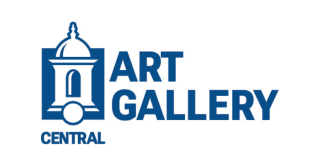
Objective 1.1
Objective 1.1 | |||||||||||||
Implement outcomes-based assessment for all academic programs, and student support services to promote continuous improvement. | |||||||||||||
| |||||||||||||
| |||||||||||||
Objective 1.1 | |||||||||||||
Implement outcomes-based assessment for all academic programs, and student support services to promote continuous improvement. | |||||||||||||
| |||||||||||||
| |||||||||||||
Objective 1.2 | ||||||||||||
Improve student perception of instructional effectiveness and of their own learning in and out of the classroom. | ||||||||||||
| ||||||||||||
| ||||||||||||
Objective 1.3 | |||||||||||||
Following a well thought-out strategy, increase the number of courses that incorporate educational technology to promote student engagement, learning, and academic success, including developing hybrid/blended-learning courses and online courses and programs. | |||||||||||||
| |||||||||||||
| |||||||||||||
Objective 1.4 | |||||||||||||
Increase the number of students involved in undergraduate and graduate research and the level of funding for that research and creative activity. | |||||||||||||
| |||||||||||||
| |||||||||||||
Objective 1.5 | |||||||||||||
Increase the number of faculty who participate annually in campus-based professional development activities focused on teaching and learning. | |||||||||||||
| |||||||||||||
| |||||||||||||
Objective 1.6 | |||||||||||||
Increase collaboration and partnerships between Academic Affairs and Student Affairs to promote student learning. | |||||||||||||
| |||||||||||||
| |||||||||||||
Objective 1.7 | |||||||||||||
Increase instructional design assistance for faculty to support teaching and learning. | |||||||||||||
| |||||||||||||
| |||||||||||||
Objective 2.1 | |||||||||||||
Improve the retention rate for first-time, full-time students between their freshman, sophomore, and junior years. Reference to Strategic Plans: ASP 04 1.4 FPP 01 4.2 | |||||||||||||
| |||||||||||||
Objective 2.2 | |||||||||||||
Improve six-year graduation rate for first-time, full-time students. | |||||||||||||
| |||||||||||||
| |||||||||||||
Objective 2.3 | |||||||||||||
Improve the graduation rate for full-time transfer students. | |||||||||||||
| |||||||||||||
| |||||||||||||
Objective 2.4 | |||||||||||||
| Maintain an APR score for all intercollegiate athletic teams above the NCAA cut score. | |||||||||||||
| |||||||||||||
Objective 2.5 | |||||||||||||
Increase the effectiveness of academic advising. | |||||||||||||
| |||||||||||||
| |||||||||||||
Objective 2.6 | |||||||||||||
Improve the effectiveness of the First Year Experience program. | |||||||||||||
| |||||||||||||
| |||||||||||||
Objective 2.7 | |||||||||||||
Improve safety, health and security on campus. | |||||||||||||
| |||||||||||||
| |||||||||||||
Objective 2.8 | |||||||||||||
Reduce student legal offenses and non-academic misconduct cases. | |||||||||||||
| |||||||||||||
| |||||||||||||
Objective 2.9 | |||||||||||||
Increase student participation in co-curricular activities. | |||||||||||||
| |||||||||||||
| |||||||||||||
Objective 2.10 | |||||||||||||
Ensure course scheduling that facilitates students' academic progress. | |||||||||||||
| |||||||||||||
| |||||||||||||
Objective 2.11 | ||||||||||||
Increase the total amount of financial aid awarded. | ||||||||||||
| ||||||||||||
| ||||||||||||
Objective 2.12 | |||||||||||||
Increase the ratio of full-time to part-time students. | |||||||||||||
| |||||||||||||
| |||||||||||||
Objective 2.13 | |||||||||||||
Increase the average entry level SAT score and Class Percentile for first-time, full-time students. | |||||||||||||
| |||||||||||||
| |||||||||||||
Objective 3.1 | |||||||||||||
Increase the number of students who are involved in applied or experiential learning (e.g., service learning, projects for external audiences, co-ops, internships, etc.). | |||||||||||||
| |||||||||||||
| |||||||||||||
Objective 3.2 | |||||||||||||
Promote and support increased community engagement by faculty, staff, and students. | |||||||||||||
| |||||||||||||
| |||||||||||||
Objective 3.31 | |||||||||||||
Identify and respond to state workforce and professional development needs through credit and non-credit course offerings and programs. | |||||||||||||
| |||||||||||||
| |||||||||||||
Objective 3.4 | |||||||||||||
Increase opportunity for on-campus work for students. | |||||||||||||
| |||||||||||||
| |||||||||||||
Objective 3.6 | |||||||||||||
Increase the acquisition, support, and upkeep for instrumentation, software, and technology needed for the professional development of students. | |||||||||||||
| |||||||||||||
| |||||||||||||
Objective 3.7 | |||||||||||||
Ensure students have appropriate proficiencies for IT-based tasks. | |||||||||||||
| |||||||||||||
| |||||||||||||
Objective 4.2 | |||||||||||||
Improve faculty and staff satisfaction. | |||||||||||||
| |||||||||||||
| |||||||||||||
Objective 4.3 | |||||||||||||
Increase internal resources to support faculty scholarship and creative activity. | |||||||||||||
| |||||||||||||
| |||||||||||||
Objective 4.4 | |||||||||||||
Increase external funding received through grants and contracts. | |||||||||||||
| |||||||||||||
| |||||||||||||
Objective 4.5 | |||||||||||||
Provide faculty and staff with the technology, support, and professional development necessary to work efficiently. | |||||||||||||
| |||||||||||||
| |||||||||||||
| ||||||||||||||||||||
Objective 5.2 | |||||||||||||
Increase the number of courses that integrate an international component. | |||||||||||||
| |||||||||||||
| |||||||||||||
| |||||||||||||||||||
| |||||||||||||||||||
| ||||||||||||||||||||
| |||||||||||||||||||
|
| |||||||||||||||||||
Objective 7.1 | |||||||||||||
Increase the square footage of academic space for classrooms, laboratories, faculty offices, library and research, and student support. | |||||||||||||
| |||||||||||||
| |||||||||||||
Objective 7.2 | |||||||||||||
Increase the square footage of space for student support services. | |||||||||||||
| |||||||||||||
| |||||||||||||
Objective 7.3 | |||||||||||||
Increase the number of students accommodated in residence halls and square footage of residence hall space. | |||||||||||||
| |||||||||||||
| |||||||||||||
| |||||||||||||||||||
Objective 7.5 | |||||||||||||
Improve both outdoor and indoor space for co-curricular activities. | |||||||||||||
| |||||||||||||
| |||||||||||||
| |||||||||||||||||||
| |||||||||||||||||||
Objective 8 | |||||||||||||||
Enhance and maintain effective operations in information services and infrastructure in support of teaching and student learning. | |||||||||||||||
| |||||||||||||||
| |||||||||||||||
Objective 8.1 | |||||||||||||
Maintain a life-cycle funding model to ensure adequate technology refresh to allow the University to meet its academic and administrative technology needs. | |||||||||||||
| |||||||||||||
| |||||||||||||
Objective 8.2 | |||||||||||||
Maintain a life-cycle funding model to ensure adequate technology infrastructure refresh to allow the University to meet its academic and administrative technology needs. | |||||||||||||
| |||||||||||||
| |||||||||||||
Objective 8.3 | |||||||||||||
Enhance security and mitigate risks in all operational activities. | |||||||||||||
| |||||||||||||
| |||||||||||||
Objective 8.4 | |||||||||||||
Enhance and maintain the effectiveness of Disaster Preparedness. | |||||||||||||
| |||||||||||||
| |||||||||||||